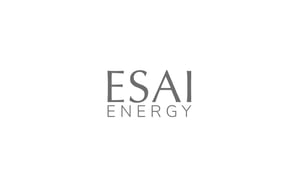OPEC+ Be Careful What You Wish For
This weekend’s OPEC+ agreement will lead to a deeper supply/demand deficit in July, yielding a bigger stock draw in July.
 As we indicated in our May Global Crude Oil Outlook the supply cuts around the world are working well. Moreover, we wrote that the OPEC+ producers do not have to extend the June targets past June. Even if you accept the highest estimates of Iraqi production in May and June, OPEC+ still does not have to extend the May-June targets into July to yield a draw in global inventories in July. Especially with Saudi Arabia, Kuwait, the UAE and even Oman cutting by more unilaterally. From ESAI Energy’s perspective, this decision is about shoring up multilateral compliance, which is the centerpiece of their multilateral collaboration. This is conceptually consistent with the Saudi decision to ramp up production as demand collapsed in April in order to get Russia back to the negotiating table and agree to an historic production cut.
As we indicated in our May Global Crude Oil Outlook the supply cuts around the world are working well. Moreover, we wrote that the OPEC+ producers do not have to extend the June targets past June. Even if you accept the highest estimates of Iraqi production in May and June, OPEC+ still does not have to extend the May-June targets into July to yield a draw in global inventories in July. Especially with Saudi Arabia, Kuwait, the UAE and even Oman cutting by more unilaterally. From ESAI Energy’s perspective, this decision is about shoring up multilateral compliance, which is the centerpiece of their multilateral collaboration. This is conceptually consistent with the Saudi decision to ramp up production as demand collapsed in April in order to get Russia back to the negotiating table and agree to an historic production cut.
Yet a consequence of this decision will be higher prices, and many different supply stories unfolding. For example, we estimate Venezuelan production is down more than 300,000 b/d since the beginning of the year. Chances are Venezuela’s production will not recover this year. By contrast, Libyan production may be poised to increase as Khalifa Haftar’s LNA incursion towards Tripoli seems to have failed. Libya’s western production is likely to come back by the fall (See ESAI Energy’s AfricaWatch). Meanwhile, non-OPEC producers around the world are reconsidering their production plans as they look at Brent in the $40s rather than the $30s. The most notable supply stories, however, will be in Russia and the U.S.
As we explained in our CIS Watch, as Russia extends its production cuts into July, rising domestic throughput means their exports will drop by perhaps as much as 750,000 b/d. This is a clear blow to Russia’s global market share. We believe this hit will change the calculus of the OPEC+ deal for Russia for the rest of the year. Thus, we expect Russia to quietly lift production above the agreed targets later in the year, especially if U.S. shale begins to recover.
As for shale, with WTI approaching, and likely to exceed, $40, operating costs for most producers are now clearly covered and the gap between prices and breakeven costs has narrowed. There is a theory going around that the Saudis not only want to reduce inventories but also encourage backwardation, which will supposedly harm shale producers who typically hedge forward. First, even if this action lifts prompt prices, by reducing the inventory overhang, it will support the whole curve. Second, we estimate for shale producers who hedge, they have already hedged between 35 and 45 percent (depending the month) of their 2020 production at an average price in the high $40s. Going forward, locking in a price even just in the $40s will enable some of the bigger independents to add rigs back. The bottom line is that extending the May-June production restraint another month will support prices and bring some shale back quicker. The following chart shows the impact of this agreement in bringing down the global surplus in July. Ironically with prices lifting production elsewhere, we expect the surplus will not fall as much by December, as it might have if OPEC+ had just struck to its original deal.